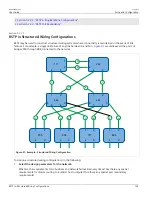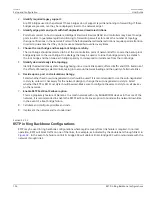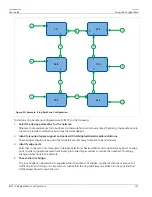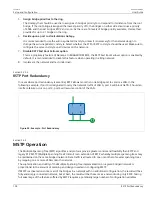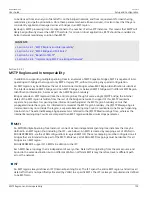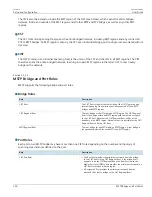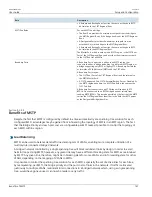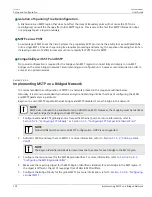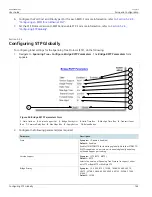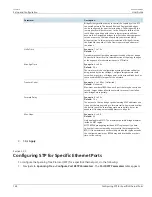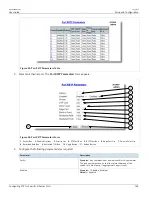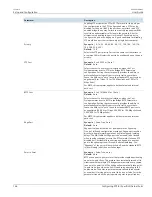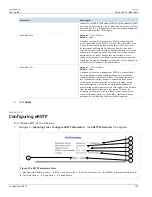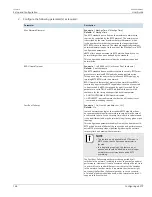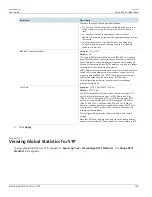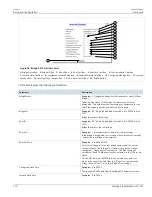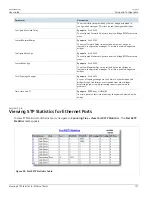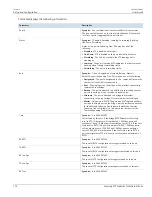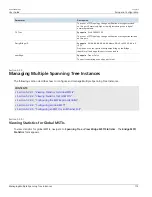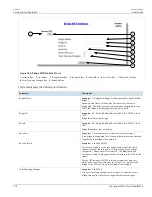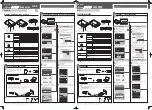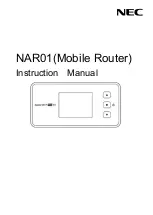
RUGGEDCOM ROS
User Guide
Chapter 5
Setup and Configuration
MSTP Regions and Interoperability
159
to be derived from an analysis of data traffic on the bridged network, and from requirements for load sharing,
redundancy, and path optimization. Once these parameters have all been derived, it is also critical that they are
consistently applied and managed across all bridges in an MST region.
By design, MSTP processing time is proportional to the number of active STP instances. This means that MSTP will
likely be significantly slower than RSTP. Therefore, for mission critical applications, RSTP should be considered a
better network redundancy solution than MSTP.
CONTENTS
•
Section 5.2.3.1, “MSTP Regions and Interoperability”
•
Section 5.2.3.2, “MSTP Bridge and Port Roles”
•
Section 5.2.3.3, “Benefits of MSTP”
•
Section 5.2.3.4, “Implementing MSTP on a Bridged Network”
Section 5.2.3.1
MSTP Regions and Interoperability
In addition to supporting multiple spanning trees in a network of MSTP-capable bridges, MSTP is capable of inter-
operating with bridges that support only RSTP or legacy STP, without requiring any special configuration.
An MST region may be defined as the set of interconnected bridges whose MST Region Identification is identical.
The interface between MSTP bridges and non-MSTP bridges, or between MSTP bridges with different MST Region
Identification information, becomes part of an MST Region boundary.
Bridges outside an MST region will see the entire region as though it were a single (R)STP bridge; the internal
detail of the MST region is hidden from the rest of the bridged network. In support of this, MSTP maintains
separate
hop counters
for spanning tree information exchanged at the MST region boundary versus that
propagated inside the region. For information received at the MST region boundary, the (R)STP Message Age is
incremented only once. Inside the region, a separate Remaining Hop Count is maintained, one for each spanning
tree instance. The external Message Age parameter is referred to the (R)STP Maximum Age Time, whereas the
internal Remaining Hop Counts are compared to an MST region-wide Maximum Hops parameter.
MSTI
An MSTI (Multiple Spanning Tree Instance) is one of sixteen independent spanning tree instances that may be
defined in an MST region (not including the IST – see below). An MSTI is created by mapping a set of VLANs (in
RUGGEDCOM ROS, via the VLAN configuration) to a given MSTI ID. The same mapping must be configured on all
bridges that are intended to be part of the MSTI. Moreover, all VLAN to MSTI mappings must be identical for all
bridges in an MST region.
RUGGEDCOM ROS supports 16 MSTIs in addition to the IST.
Each MSTI has a topology that is independent of every other. Data traffic originating from the same source and
bound to the same destination but on different VLANs on different MSTIs may therefore travel a different path
across the network.
IST
An MST region always defines an IST (Internal Spanning Tree). The IST spans the entire MST region, and carries all
data traffic that is not specifically allocated (by VLAN) to a specific MSTI. The IST is always computed and is defined
to be MSTI zero.











